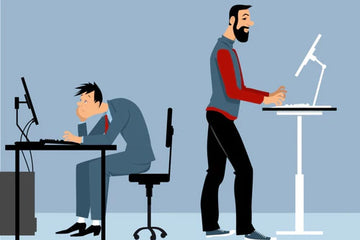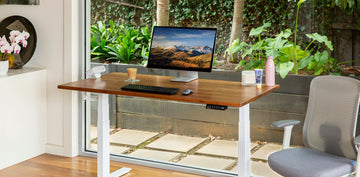Our bodies were made for movement — perfectly and intricately synchronised to function as a whole.
Any movement or postural change is a complex orchestration between bones, joints, cartilage, muscles and tendons.
This means that weakness or injury in one area would automatically be compensated for in another. Long-term incorrect posture and poor circulation may negatively impact more than just hip health. Hip flexor pain when sitting is a common issue with people who work for long hours every day and don’t have an ergonomic work setup. If you’re suffering from sore hips when sitting, understand that relief can come easily and naturally.
In this blog post, we will discuss what causes hip flexor pain from sitting and how to relieve hip flexor pain with the aid of our ergonomic products.
Let’s dive into the details.
Paying Attention to Certain Parts of Your Body Due to Sore Hips When Sitting
The Hips
Your hips are the area where your femur (thigh bone) articulates with your pelvis.The hips are the happy medium between the upper and lower body. They carry us in perfect balance. They help us to move forward, upward or wherever it is that we need to go in life. If you’re experiencing hip flexor pain while sitting, it’s likely due to inactivity, poor posture or a general lack of exercise.
Pain serves as a pre-cursory warning to prevent injury or reduce further harm. It needs to be addressed, and the necessary lifestyle adjustments made soon.
Bones
While bone density naturally decreases with age, weight-bearing exercises have shown positive results in increasing bone density.
Standing loads the hips with a better distribution of weight than sitting — we recommend using our PRO series standing desks to improve your posture and blood circulation.
Joints
Our joints help us to change direction with comfort and ease.
The hip joint refers to the ball-and-socket joint between the head of your thigh bone and the socket of your hip bone on either side of the pelvis. Unfortunately, everyone occasionally has problems with this joint, especially as we age. But there’s some light and love ahead, and its name is movement.
Movement helps to maintain joint health, as well as the moisture balance between joints and cartilage. Exercise compresses the joints to force more nutrient-rich fluid into the cartilage, keeping smooth and comfortable movement possible and early degenerative changes at bay.
Muscles (Flexors)
Hip flexors refer to the group of muscles in your hips that enable you to pull your legs upwards towards your torso.
The flexion, or pulling action, is what allows you to walk or lift your legs. Needless to say, they play a pivotal role in everyday activities, which is why it’s crucial to keep them healthy.
But when we sit, the hip flexors rest in an unnatural position while the legs and torso are pulled together. Excessive sitting can shorten your hip flexors, causing tightness and pain.
Wondering how to fix a sore hip flexor easily and naturally? The best way to keep your hip flexors healthy is to keep moving, and this is where standing desks — adjustable height desks, in particular — come in handy.
By moving and stretching your flexors every couple of hours rather than sitting sedentary for long periods, we give our flexors the attention they desperately crave.
Tendons
Tendons are largely inelastic and assist in concentrating the pull of a muscle on a small area of bone. This means that any unnatural long-term stress or strain like sitting will take its toll on you.
Overuse, direct trauma and muscle weakness or tightness, may cause tenderness, pain and inflammation of the tendons. To relieve tendon soreness, we highly recommend investing in an adjustable ergonomic office chair.
How to Relieve Hip Flexor Pain While at Work
Invest in a Standing Desk
One way to combat hip flexor pain is by investing in a standing desk. Sitting for extended periods can cause your hip flexors to tighten and become painful. A standing desk allows you to switch between sitting and standing, reducing the strain on your hip flexor muscles. This simple change can make a world of difference.Upgrade to an Ergonomic Chair
These chairs are designed to provide proper support for your lower back and hips, reducing the risk of hip flexor pain when sitting. Look for a chair that offers adjustable features to ensure it fits your body comfortably.
Stretch It Out at the Office
Here are some stretches you can try that are perfect for an ergonomic setup:
-
Seated Hip Flexor Stretch
Sit on the edge of your chair and place one ankle on the opposite knee. Gently press down on the raised knee until you feel a stretch in your hip flexors. Hold for 20-30 seconds and repeat on the other side. -
Knee-to-Chest Stretch
Another great stretch is the knee-to-chest stretch. Sit up straight in your chair and hug one knee to your chest, holding it for 20-30 seconds. This stretch helps release tension in the hip flexor muscles. -
Standing Quad Stretch
This stretch requires you to stand. Grab your ankle behind you and gently pull it towards your glutes, feeling a stretch in your quad and hip flexor. Hold for 20-30 seconds on each leg.







